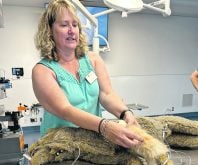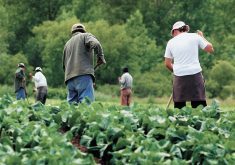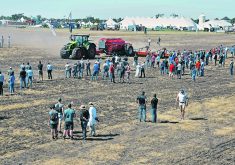News of exemptions that allow temporary foreign workers to come to Canada was greeted with relief by agricultural sectors that require the additional labour.
However, government restrictions surrounding control of COVID-19 spread are adding complexity and expense to the process.
Foreign workers are allowed to travel to Canada and will be assessed at their port of entry. After that, they are required to isolate for 14 days, whether or not they have symptoms. The same rule applies to Canadians returning from any other country.
The isolation requirement puts an onus upon employers, said Jennifer Wright of the Canadian Agricultural Human Resource Council.
Read Also

Farmers urged to be grain-safe this fall
Working around grain bins comes with risk, from farmers falling to drowning in grain: Experts have five tips to help avoid grain-related accidents this harvest.
“(The regulations) clearly state that employers are required to pay regular pay during the 14-day isolation but that those workers are not authorized to be doing any work at all during that 14 day isolation,” she said in recent webinars organized by livestock commodity groups.
“That means that you cannot have workers do building maintenance… that type of thing. It clearly states they are not authorized to work.”
According to the Canadian immigration department, “employers cannot authorize workers to work during the self-isolation period even if requested by the worker. Exceptions apply to workers who have been deemed to be providing an essential service by the chief public health officer.”
Worker compensation during the 14 days must include regular pay and benefits for a minimum of 30 hours a week at the rate specified in the Labour Market Impact Assessment and nothing can be deducted because of the required isolation, the regulations state.
As well, employers are required to monitor the health of the isolated workers, which can be done by daily e-mails or text messages that provide a record that monitoring took place, said Wright.
If any worker becomes ill, the employer must ensure they fully self-isolate, must inform local health authorities and ensure the worker has access to health care if needed.
Employers also need to supply all facilities and materials to enable good personal hygiene and household cleaning, Wright added.
Canada Immigration states if an employer does not already have accommodations where workers can live and self-isolate, alternatives must be found. Those in the 14-day isolation period must be housed separately from other workers.
“Employers can house workers who are subject to self-isolation together, but the housing must enable them to be two metres apart at all times. Beds must be at least two metres apart, shared facilities are allowed as long as they provide sufficient space in the accommodations,” the rules state.
“Employers must ensure the accommodations allow workers to avoid contact with people over age 65, and people with medical conditions who are at risk of developing a serious illness. For example, a caregiver to a senior must be housed in separate accommodations for the duration of the self-isolation period.”
CAHRC has a list of websites and information sources to help farmers, ranchers and commodity groups with COVID-19 related concerns. It can be found at https://cahrc-ccrha.ca/programs/emerging-agriworkforce-issues/information-and-updates-coronavirus-covid-19.
















